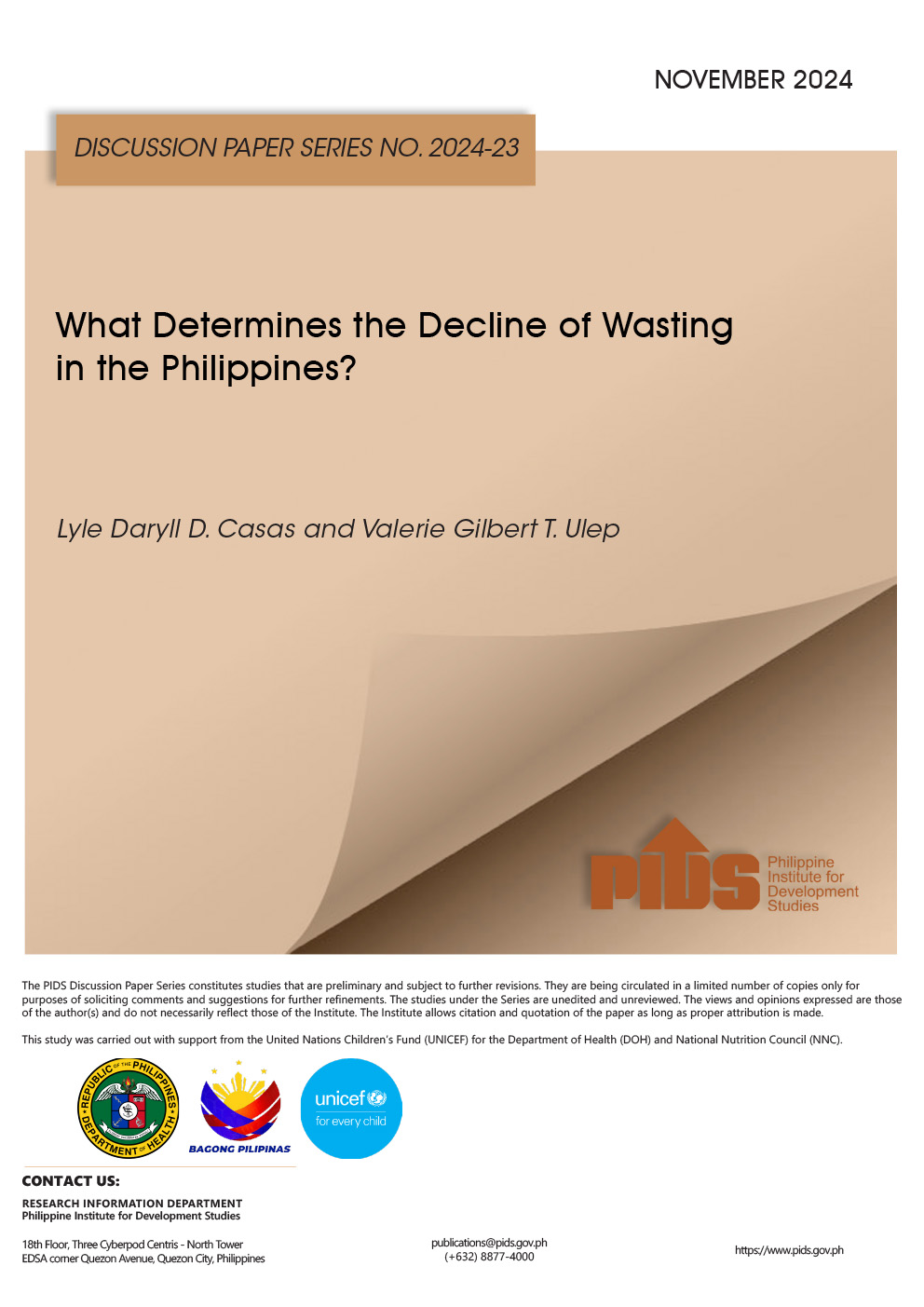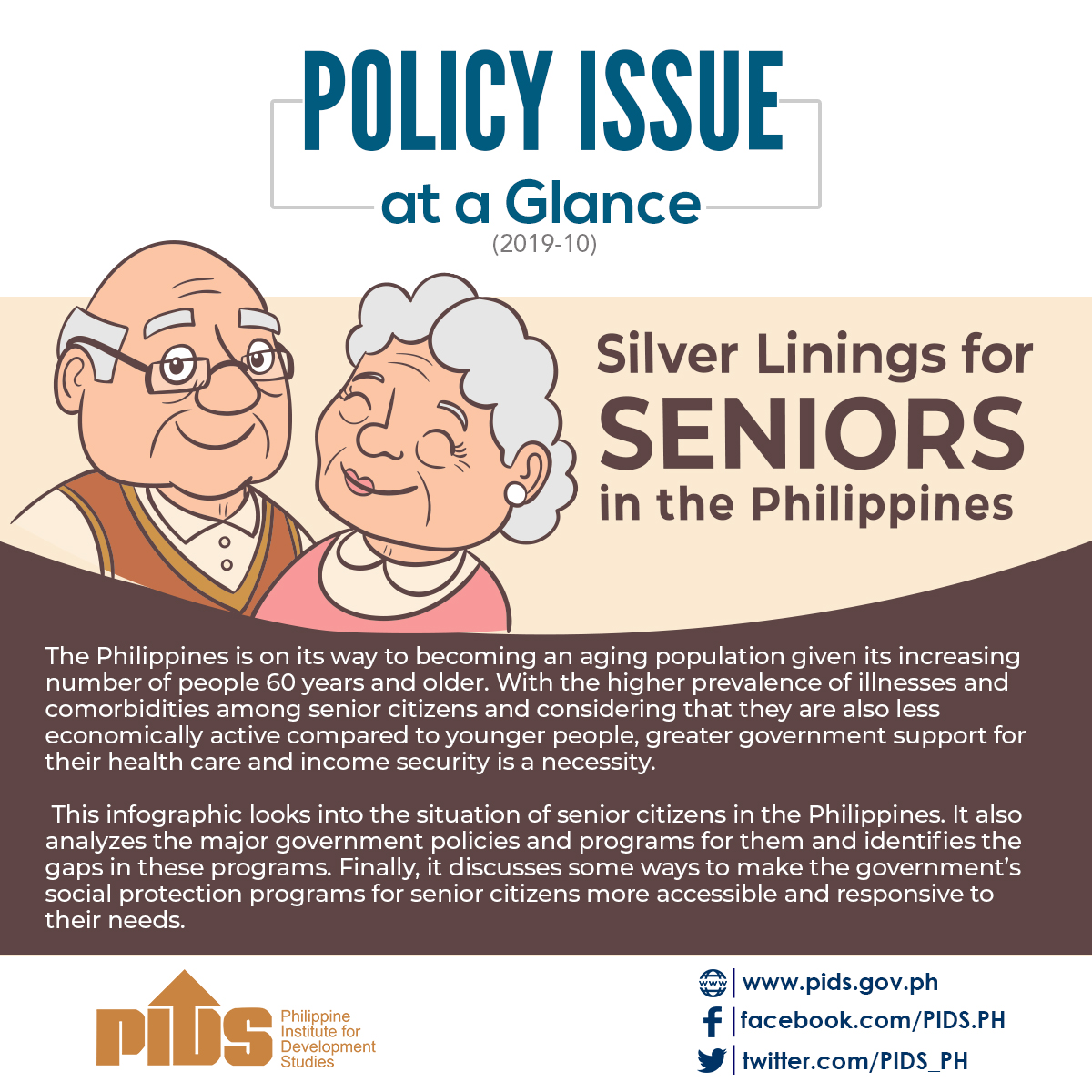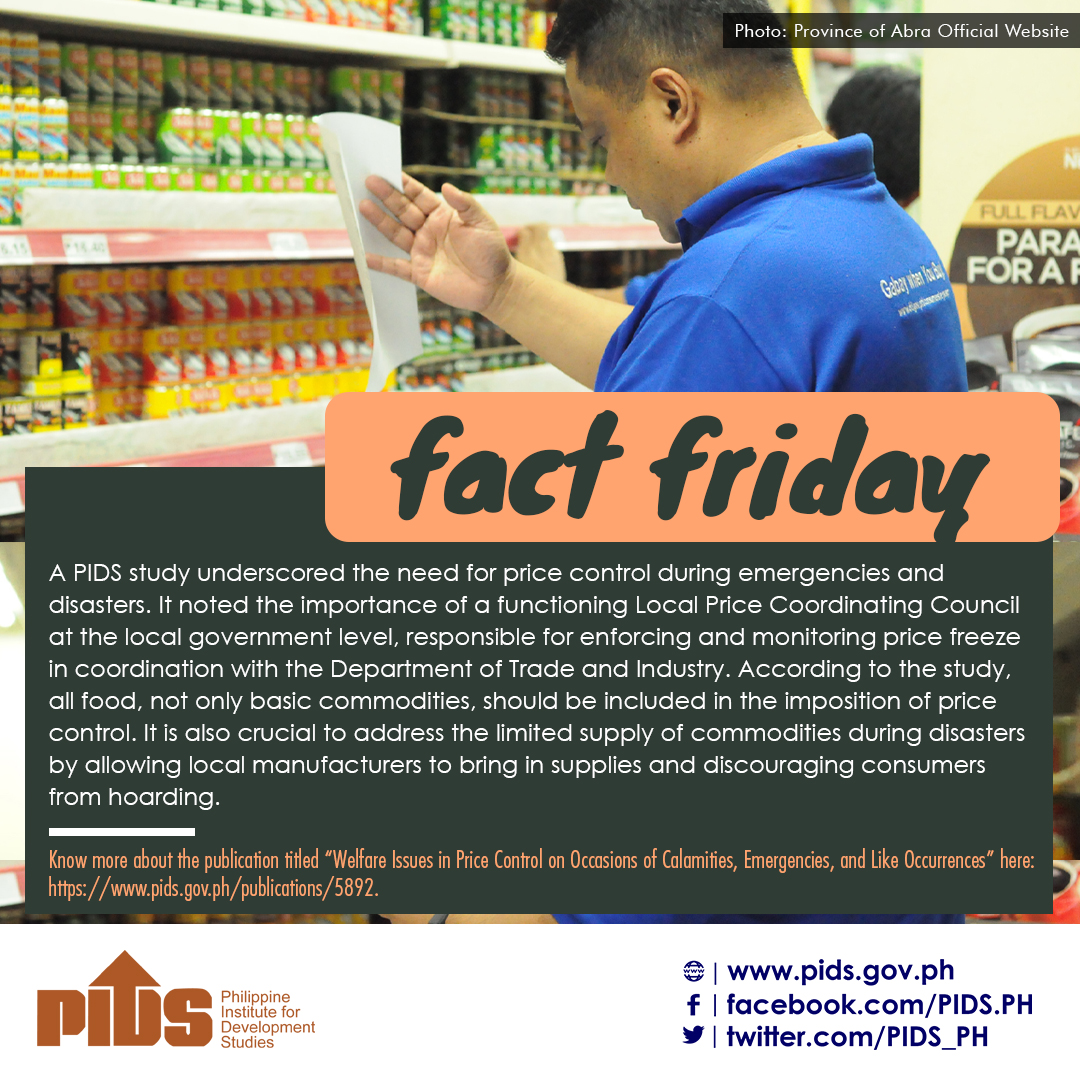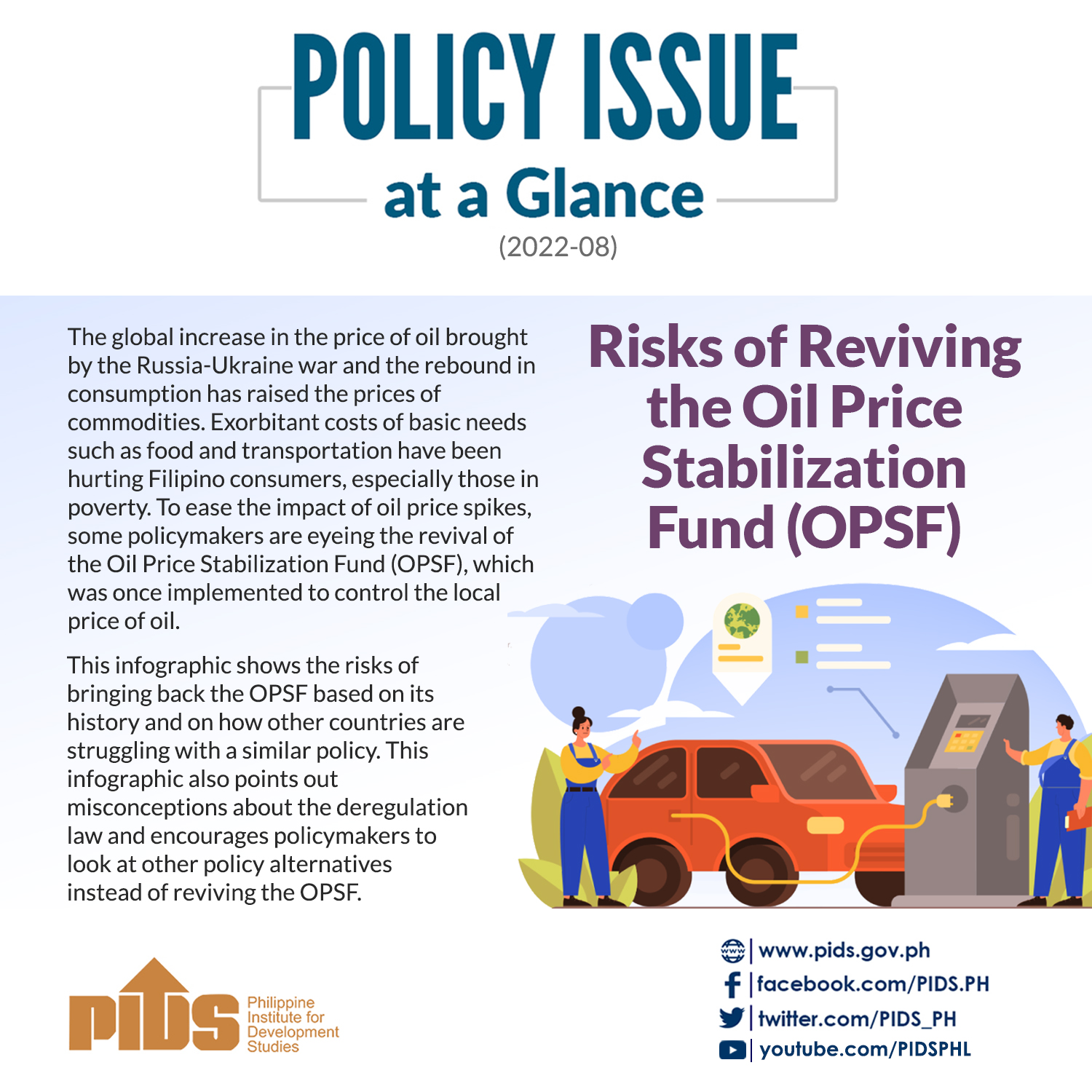
The government needs to rethink price setting in the public procurement of drugs and medicines.
This was recommended by Philippine Institute for Development Studies (PIDS) Senior Research Fellow Michael Abrigo, Research Analyst Katha Ma-I Estopace, Consultant Gina Opiniano, Research Analyst Zhandra Tam, and Administrative Assistant Sherryl Yee in their recent study.
The Department of Health (DOH) introduced the Philippine Drug Price Reference Index (DPRI) as the basis for the maximum government procurement price of pharmaceutical products.
However, the study revealed that DPRI compliance is not associated with cheaper prices among successful procurements.
Moreover, DPRI compliance is associated with longer posting periods of about 10 percent or roughly 2 days more than postings that are not DPRI-compliant. It also has a 17.7 percent probability of procurement failure, which suggests longer delays in the procurement process, according to the authors.
Using data from the DOH between 2012 and 2021, the study also observed that “for many of the medicines, the DPRI is decreasing,” including amlodipine and clopidogrel. They also noted increasing trends for metformin and metronidazole, while for others, the DPRI is “largely constant” or “even erratic”.
“More than half of posted procurement calls in the Philippine Government Electronic Procurement System (PhilGEPS) for amoxicillin, losartan, metronidazole, and paracetamol do not follow the set DPRI as ceiling prices. Further, more than 75 percent of awarded contracts for paracetamol, losartan, and amoxicillin used procurement prices above the DPRI,” the authors said.
The study also noted some issues in the DPRI based on interviews. One is the difficulty in procuring medicines with few or sole providers because the approved budget for the contract is “too low in comparison to the market price”.
“Because of the low ceiling price in the DPRI, the participants expressed that they often encounter failed bids. This is experienced throughout every region,” the study said.
Other issues raised include those related to delivery and timely publication “so that health services do not need to adjust their [project procurement management plans]”.
Given these findings, the authors noted that “there may be a need to rethink how [the] DPRI is calculated,” by potentially expanding it to include trends in market prices rather than tender prices. They said this would protect the DPRI from “erratic price changes based on few tenders, taking into consideration its intended function as price revelation mechanism.” ###
This press release is based on the PIDS discussion paper “Public Sector Procurement of Medicines in the Philippines”.
This was recommended by Philippine Institute for Development Studies (PIDS) Senior Research Fellow Michael Abrigo, Research Analyst Katha Ma-I Estopace, Consultant Gina Opiniano, Research Analyst Zhandra Tam, and Administrative Assistant Sherryl Yee in their recent study.
The Department of Health (DOH) introduced the Philippine Drug Price Reference Index (DPRI) as the basis for the maximum government procurement price of pharmaceutical products.
However, the study revealed that DPRI compliance is not associated with cheaper prices among successful procurements.
Moreover, DPRI compliance is associated with longer posting periods of about 10 percent or roughly 2 days more than postings that are not DPRI-compliant. It also has a 17.7 percent probability of procurement failure, which suggests longer delays in the procurement process, according to the authors.
Using data from the DOH between 2012 and 2021, the study also observed that “for many of the medicines, the DPRI is decreasing,” including amlodipine and clopidogrel. They also noted increasing trends for metformin and metronidazole, while for others, the DPRI is “largely constant” or “even erratic”.
“More than half of posted procurement calls in the Philippine Government Electronic Procurement System (PhilGEPS) for amoxicillin, losartan, metronidazole, and paracetamol do not follow the set DPRI as ceiling prices. Further, more than 75 percent of awarded contracts for paracetamol, losartan, and amoxicillin used procurement prices above the DPRI,” the authors said.
The study also noted some issues in the DPRI based on interviews. One is the difficulty in procuring medicines with few or sole providers because the approved budget for the contract is “too low in comparison to the market price”.
“Because of the low ceiling price in the DPRI, the participants expressed that they often encounter failed bids. This is experienced throughout every region,” the study said.
Other issues raised include those related to delivery and timely publication “so that health services do not need to adjust their [project procurement management plans]”.
Given these findings, the authors noted that “there may be a need to rethink how [the] DPRI is calculated,” by potentially expanding it to include trends in market prices rather than tender prices. They said this would protect the DPRI from “erratic price changes based on few tenders, taking into consideration its intended function as price revelation mechanism.” ###
This press release is based on the PIDS discussion paper “Public Sector Procurement of Medicines in the Philippines”.












